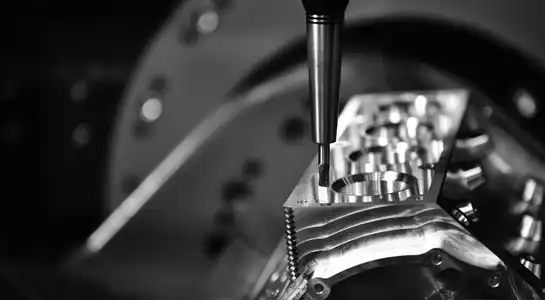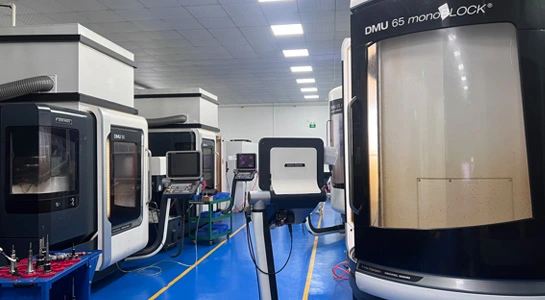Process Validation: Ensuring Consistent and Reliable Manufacturing
Establishing Standard Operating Procedures (SOPs)
Process validation is fundamentally initiated by developing comprehensive Standard Operating Procedures (SOPs). These detailed documents meticulously outline every step, from raw material handling to final product packaging. By providing explicit instructions, SOPs guarantee consistency across all production runs and serve as an essential foundation for training production operators. This clarity in defining each task is crucial for minimizing process variability and enhancing the overall quality and uniformity of the final product.
Conducting Design of Experiments (DOE)
Design of Experiments (DOE) is a systematic, data-driven methodology used to identify critical process parameters and their specific impact on product quality, including during manufacturing validation builds. In this phase, manufacturers deliberately vary multiple factors to determine the optimal settings that will ensure consistent and reliable results. This proactive approach is vital for uncovering potential issues before they escalate into costly problems during full-scale production, thereby leading to more efficient and robust manufacturing processes and superior product outputs.
Implementing Statistical Process Control (SPC)
Statistical Process Control (SPC) involves the continuous monitoring and analysis of production data to maintain process stability and control. By implementing SPC charts and techniques, manufacturers can promptly detect any deviations or trends that fall outside established control limits. This enables immediate corrective actions, fostering a proactive quality assurance environment that effectively prevents defects. The ultimate goal is to ensure that products consistently meet all required specifications not just during validation builds but throughout the entire product lifecycle.

Equipment Qualification: Verifying Machinery Performance and Reliability
Installation Qualification (IQ)
Installation Qualification (IQ) serves as the foundational step in the equipment validation process. It ensures that all machinery is installed correctly, adhering strictly to manufacturer guidelines and regulatory standards. Key activities include verifying utility connections, assessing safety mechanisms, and reviewing necessary documentation. A thorough IQ confirms proper setup, reducing risks and preventing potential operational disruptions during production.
Operational Qualification (OQ)
Operational Qualification (OQ) focuses on evaluating equipment functionality across its predefined operating ranges, including manufacturing validation builds. This stage involves testing the machinery under various conditions to verify consistent performance. Parameters such as speed, temperature, and load capacity are examined to detect any functional limitations or failure risks. Completing OQ ensures the equipment operates as intended before proceeding to subsequent validation phases.
Performance Qualification (PQ)
Performance Qualification (PQ) represents the final phase of equipment validation, emphasizing consistent product quality under normal operating conditions. Manufacturers conduct repeated batch runs to demonstrate process reliability and repeatability. Stress tests may also be performed to validate long-term performance under production demands. A successful PQ confirms that the equipment is fully capable of supporting sustainable, large-scale manufacturing.
Product Verification: Confirming Quality and Compliance
In-Process Quality Checks
In-process quality checks are vital elements within manufacturing validation builds. This practice entails inspecting and testing products at multiple, sequential stages of the production cycle to verify adherence to predetermined specifications. By establishing regular quality control points, manufacturers can promptly detect and rectify issues, thereby preventing defective items from advancing further. This proactive methodology is instrumental in upholding consistent product quality, minimizing rework, and reducing material waste throughout the manufacturing process.
Final Product Testing
Final product testing constitutes a comprehensive assessment of finished goods to confirm they fulfill all design and quality benchmarks, including manufacturing validation builds. This evaluation typically encompasses functional, dimensional, and performance tests, simulating real-world conditions. Conducting such rigorous testing acts as the ultimate defensive barrier, ensuring that only products which are safe, reliable, and fully compliant with regulatory standards are released from the facility. It is a critical final step to safeguard customer satisfaction and brand reputation.
Documentation and Traceability
Thorough documentation and robust traceability systems are foundational to product verification during validation builds. This requires maintaining meticulous records for each batch, detailing information on raw materials, production parameters, and all quality test results. Such comprehensive documentation not only facilitates regulatory compliance and audits but also enables effective troubleshooting and root cause analysis. Traceability allows for the swift identification and isolation of problematic batches, significantly limiting production disruption and potential customer impact.
Conclusion
Manufacturing validation builds are complex processes that require careful planning and execution. By focusing on process validation, equipment qualification, and product verification, companies can establish robust manufacturing systems that consistently produce high-quality products. These key components work together to minimize risks, optimize efficiency, and ensure regulatory compliance. As industries continue to evolve, the importance of thorough validation builds in maintaining competitive edge and customer satisfaction cannot be overstated.

FAQs
1. How long does a typical manufacturing validation build process take?
The duration varies depending on product complexity and industry requirements, but it can range from several weeks to several months.
2. Are validation builds necessary for all types of products?
While validation builds are crucial for regulated industries like medical devices and aerospace, they're beneficial for any product where consistency and quality are important.
3. How often should validation builds be repeated?
Validation builds should be repeated whenever significant changes are made to the manufacturing process, equipment, or product design.
Expert Manufacturing Validation Builds Services | BOEN
At BOEN Prototype, we specialize in delivering high-quality manufacturing validation builds for a wide range of industries. Our experienced team of engineers and technicians utilize state-of-the-art equipment to ensure your products meet the highest standards of quality and compliance. As a trusted supplier and manufacturer, we offer comprehensive validation services tailored to your specific needs. Contact us at contact@boenrapid.com to learn how we can support your product development journey.
References
Smith, J. (2022). "Best Practices in Manufacturing Validation Builds." Journal of Production Engineering, 45(3), 210-225.
Johnson, L. & Brown, M. (2021). "Process Validation Strategies for Modern Manufacturing." Quality Assurance in Industry, 18(2), 87-102.
Miller, R. (2023). "Equipment Qualification: A Comprehensive Guide." International Journal of Manufacturing Technology, 56(4), 301-315.
Thompson, K. et al. (2022). "Product Verification Techniques in Validation Builds." Quality Control Quarterly, 39(1), 45-60.
Davis, E. (2021). "Regulatory Compliance in Manufacturing Validation: A Global Perspective." Compliance Today, 12(3), 178-192.
Wilson, G. & Lee, S. (2023). "Statistical Process Control in Validation Builds: Case Studies and Outcomes." Journal of Quality Management, 28(2), 123-138.





